In the evolving landscape of women’s health and fitness, strength training has taken center stage as a cornerstone of physical empowerment, metabolic health, and functional longevity. But while lifting weights builds muscle and improves endurance, it’s a well-calibrated nutrition plan for strength training that amplifies those gains and sustains them. Especially for women, a tailored strength training eating plan is essential not only to meet fitness goals but also to support hormonal health, bone density, and long-term vitality.
You may also like: Smart Meal Prep for Weight Loss: Expert-Approved Lunch Ideas and Recipes to Stay on Track
Why Nutrition Is the Foundation of Strength Training Success
Strength training puts a unique kind of stress on the body, signaling muscle fibers to repair, grow, and adapt. This process, however, requires a consistent supply of macronutrients and micronutrients to occur effectively. Protein is central to muscle repair, but carbohydrates, fats, vitamins, and minerals all play distinct roles in energy regulation, recovery, and immune resilience. Without the proper nutritional foundation, the physical work put into the gym may not yield the desired results.
For women, this becomes even more important. Differences in hormonal cycles, muscle mass composition, and metabolic rate mean that dietary needs for female lifters are not simply scaled-down versions of male counterparts. Instead, women benefit most from a strategic approach that factors in their biological rhythms, lifestyle demands, and body composition goals. This is where a well-crafted strength training eating plan becomes indispensable.
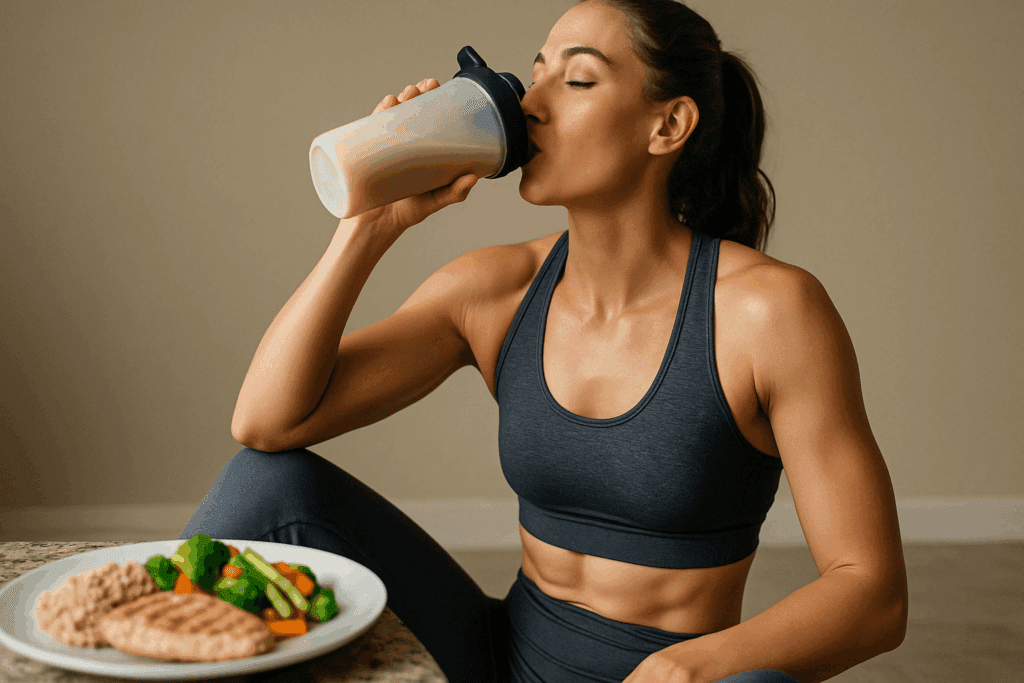
Building a Balanced Nutrition Plan for Strength Training
At the heart of an effective strength training diet lies the interplay between macronutrients. Protein remains the headline nutrient, needed in sufficient quantities to stimulate muscle protein synthesis and prevent catabolism. For active women, aiming for 1.6 to 2.2 grams of protein per kilogram of body weight daily is generally effective. However, quantity alone doesn’t guarantee success—quality and timing also matter. Lean protein sources like lentils, chickpeas, tofu, tempeh, Greek yogurt, and eggs deliver essential amino acids and support recovery post-workout.
Equally crucial are complex carbohydrates. These supply the glycogen stores that fuel resistance workouts and aid in post-training recovery. Unlike the outdated perception that carbs hinder fat loss, they are essential in a weight lifting diet for women aiming to build lean muscle without energy crashes. Whole grains, legumes, root vegetables, and fruits provide fiber, vitamins, and sustained energy.
Fats, though often misunderstood, are vital for hormonal balance. Monounsaturated and polyunsaturated fats—from sources like nuts, seeds, avocados, and olive oil—support the production of estrogen and other hormones that influence strength and recovery. A healthy strength training eating plan includes about 20-35% of total calories from fats, depending on personal energy needs.
Micronutrients, Bone Health, and Metabolic Support
While macronutrients receive most of the attention, micronutrients quietly underpin many aspects of physical performance. Calcium, magnesium, and vitamin D are critical for bone density—an area of concern for many women, especially as they age. Iron, often deficient in women, is essential for oxygen transport and energy production. B vitamins support energy metabolism, while antioxidants like vitamin C and E help counteract oxidative stress from intense workouts.
Ensuring adequate micronutrient intake means prioritizing a colorful, whole-food diet. Dark leafy greens, berries, legumes, and fortified plant-based milks are excellent sources of these nutrients. Supplementation may be necessary in some cases, particularly for women with restricted diets or absorption challenges, but food-first strategies typically provide synergistic health benefits.
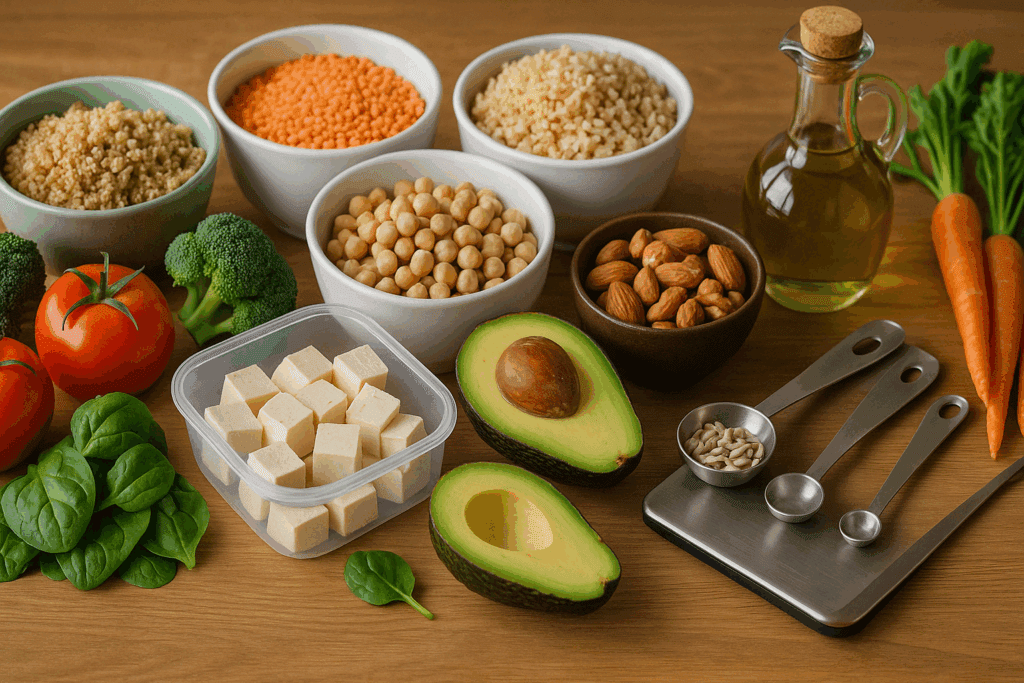
The Role of Meal Timing and Nutrient Timing in Performance
A key feature of any effective strength training nutrition plan is not just what you eat, but when. Pre-workout meals should include a balance of carbs and protein to enhance energy and prime the muscles for exertion. Ideally, consuming this meal 60 to 90 minutes before training allows for proper digestion and nutrient availability.
Post-workout meals, often called the anabolic window, aim to replenish glycogen and initiate muscle repair. A mix of fast-digesting carbs (such as fruit or a smoothie with oats) and easily absorbable protein (like a whey or plant-based shake) within 30 to 60 minutes post-training can enhance recovery. However, recent research suggests that the “window” may be more of a door—nutrient timing matters, but consistency across the day is just as crucial.
Between meals, snacks should be structured to maintain energy levels and prevent catabolism. Nuts with dried fruit, Greek yogurt with flaxseeds, or a protein bar with whole grains can bridge the gap between main meals and keep blood sugar stable.
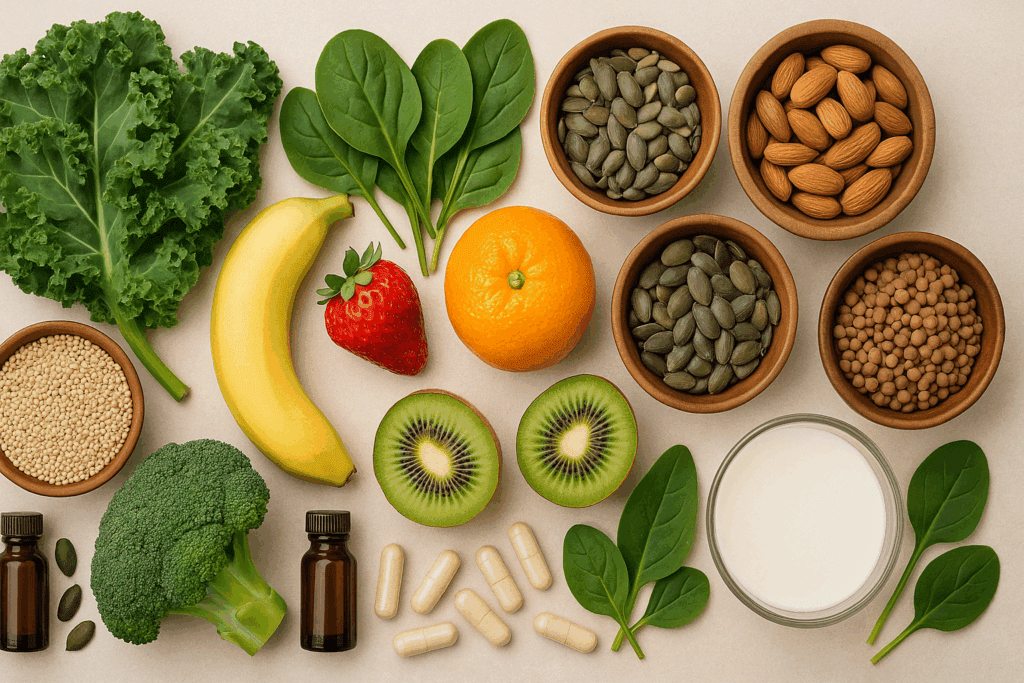
Customizing a Strength Training Eating Plan for Women
One of the defining aspects of a sustainable nutrition strategy is its adaptability. For women, tailoring the strength training eating plan to their menstrual cycle can optimize results and reduce burnout. During the follicular phase (the first half of the cycle), energy levels are generally higher, and carbohydrate tolerance is improved. This is a prime time for more intense lifting sessions and slightly higher carb intake.
In contrast, the luteal phase (the second half) often comes with decreased insulin sensitivity, increased cravings, and potential bloating. Adjusting meal timing, increasing magnesium-rich foods, and slightly increasing calorie intake can support mood, energy, and performance.
Women in perimenopause or postmenopause may also benefit from specific strategies. As estrogen declines, muscle protein synthesis becomes less efficient, making protein intake even more critical. Resistance to insulin may also increase, reinforcing the value of nutrient-dense, low-glycemic foods.
Plant-Based Approaches to Strength and Wellness
For women following vegetarian or vegan lifestyles, building muscle and optimizing metabolism is entirely achievable with proper planning. A whole-food plant-based strength training diet emphasizes legumes, soy products, whole grains, nuts, and seeds—all rich in protein and other vital nutrients. Combining complementary proteins, such as rice and beans or hummus and whole wheat pita, ensures a complete amino acid profile.
Plant-based diets also offer an abundance of antioxidants, fiber, and anti-inflammatory compounds, which can aid in recovery and overall health. However, attention should be paid to nutrients like vitamin B12, iron, zinc, and omega-3s. Fortified foods and supplementation may be necessary to fill any nutritional gaps without compromising performance or wellness.

Debunking Myths: Carbs, Keto, and the Weight Lifting Diet for Women
Despite growing understanding, myths about strength nutrition persist—particularly around low carb and ketogenic diets. Some claim that eliminating carbs speeds up fat loss and boosts energy, but research paints a more nuanced picture. In the context of resistance training, carbohydrates are the body’s preferred fuel, especially for anaerobic efforts.
The comparison between the ketogenic diet vs low carb diets reveals important distinctions. A ketogenic diet is high fat, very low carb, and moderate protein—designed to induce ketosis. Meanwhile, low carb diet keto diet models vary widely but often allow more carbs than strict keto. Understanding this helps clarify misconceptions around whether the keto diet vs low carb diet is superior for performance.
More importantly, is keto a low carb diet that supports strength training? It depends. While some women report success with keto for weight loss, studies suggest that strength, power, and hypertrophy outcomes may decline when glycogen stores are chronically depleted. The answer to whether is keto a good diet for lifters is conditional on the individual’s goals and tolerance.
Ultimately, the question is a keto diet sustainable for long-term strength goals leans toward no for many women. Without adequate carbs, maintaining training intensity and recovery becomes challenging. Moreover, is keto no carbs? Not exactly. Even keto plans include small amounts of carbs, typically under 50 grams daily—hardly ideal for fueling heavy lifting sessions.
Supporting Metabolism, Mood, and Motivation Through Food
A thoughtful strength training eating plan does more than shape the body; it influences mental resilience and metabolic rhythm. Balanced blood sugar, sufficient caloric intake, and nutrient timing can stabilize mood, reduce cravings, and support cognitive clarity. These outcomes become increasingly important for women balancing training with demanding careers, caregiving roles, or stress.
A chronic deficit in calories, particularly when paired with intense workouts, can impair thyroid function, lower estrogen, and increase cortisol. This hormonal imbalance contributes to fatigue, sleep disturbances, and plateaus in strength or body composition. Preventing this requires a mindset shift: food as fuel, not restriction.
Women who adopt this mindset often find their relationship with food improves, leading to more consistent energy and a more positive training experience. Nutritional consistency supports not just lean mass gains but sustainable motivation—critical for long-term health and adherence.
Putting It All Together: Sample Day on a Strength Nutrition Plan
Consider a practical example of how these principles look in daily life:
- Breakfast: Scrambled tofu with spinach and quinoa toast; berries on the side; cup of green tea
- Snack: Greek yogurt or plant-based protein smoothie with almond butter
- Lunch: Lentil and sweet potato bowl with olive oil vinaigrette; kale and citrus salad
- Pre-Workout: Banana and a hard-boiled egg or chia pudding
- Post-Workout: Chocolate protein shake blended with oats, flax, and frozen mango
- Dinner: Grilled tempeh with roasted vegetables, brown rice, and tahini drizzle
- Evening Snack: Cottage cheese or plant-based yogurt with walnuts and cinnamon
This plan combines the principles of nutrient timing, balance, and plant-forward diversity. It can be adjusted for calorie levels and specific dietary needs, providing a template that supports muscle growth, metabolism, and female wellness.
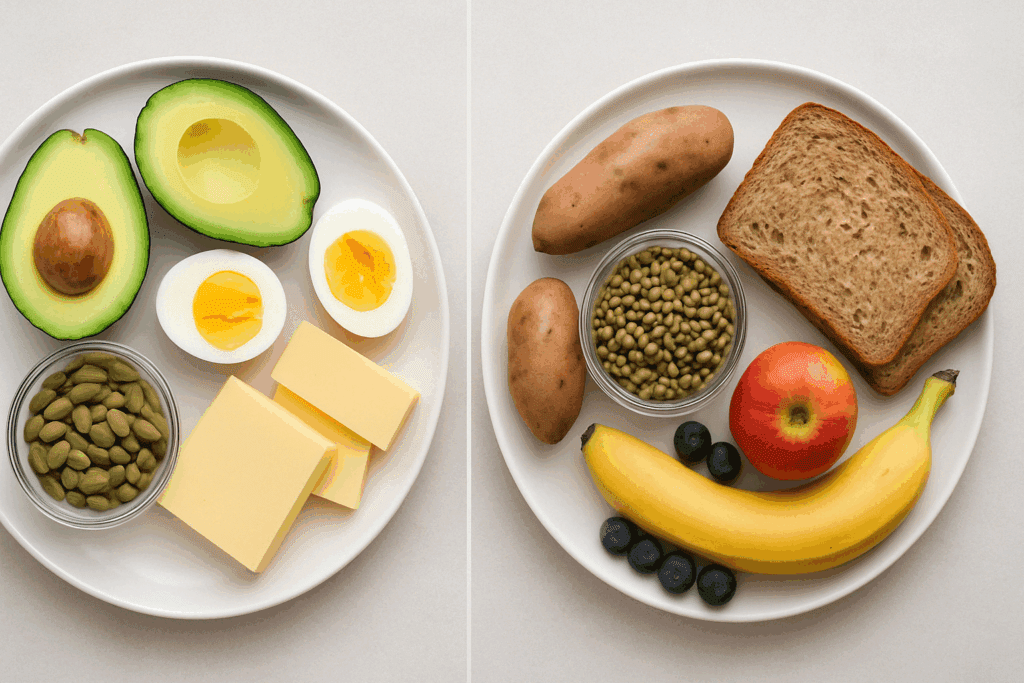
Frequently Asked Questions: Fueling Strength with a Smart Nutrition Plan for Women
1. How can women fine-tune their strength training eating plan during travel or irregular schedules?
Maintaining a strength training eating plan while traveling or working unpredictable hours can be challenging, but not impossible. One effective strategy is to focus on portable, protein-rich staples like shelf-stable tuna, protein powder packets, or pre-portioned nut butter that can anchor a meal when whole foods aren’t accessible. Women should also prioritize hydration and fiber when their routine changes, as both support digestion and recovery even without consistent training. A mobile-friendly nutrition plan for strength training includes building meals around macros rather than specific foods, allowing flexibility across cuisines and convenience stores. Keeping a few go-to meals or snacks in mind helps ensure your weight lifting diet for women stays consistent even in high-stress or variable environments.
2. What role does gut health play in a strength training eating plan for women?
Gut health influences nutrient absorption, inflammation, and even mood—all of which are relevant to athletic performance. An optimal strength training eating plan should include prebiotic fibers from vegetables, legumes, and whole grains, as well as fermented foods like kefir, sauerkraut, and plant-based yogurts that introduce beneficial bacteria. For women, fluctuating hormone levels can impact gut permeability, especially around the menstrual cycle. Ensuring gut resilience through diet can reduce bloating and optimize the bioavailability of nutrients like iron and magnesium. Integrating gut-supportive foods into a weight lifting diet for women enhances energy utilization and strengthens the foundation for sustainable fitness progress.
3. Can intermittent fasting be adapted to a nutrition plan for strength training in women?
Intermittent fasting has gained popularity for its simplicity, but applying it to a nutrition plan for strength training requires nuance, especially for women. While some may benefit from time-restricted eating, it can hinder recovery if not paired with sufficient caloric intake. For women, prolonged fasting windows may negatively affect cortisol and reproductive hormones, particularly if paired with intense workouts. Instead of rigid fasting windows, a gentler approach like a 12:12 eating schedule can preserve hormonal balance while still allowing fasting benefits. The key is to ensure the strength training eating plan prioritizes muscle protein synthesis through consistent nutrient timing within the chosen window.
4. How do psychological factors affect adherence to a weight lifting diet for women?
Beyond macros and micronutrients, psychological dynamics play a central role in whether a woman can maintain her strength nutrition goals long-term. Body image, social support, and emotional eating patterns all influence consistency. An overly rigid strength training eating plan may increase stress or guilt around food, undermining motivation and mental health. Cognitive flexibility—the ability to adapt and recover from dietary slip-ups without harsh self-judgment—is strongly correlated with sustained progress. Embedding mindfulness practices into a weight lifting diet for women’s lifestyle can improve body awareness, hunger cues, and satisfaction, fostering a more intuitive and compassionate approach to fueling strength.
5. Are there tech tools that can support a personalized strength training eating plan?
Absolutely. Wearable devices, nutrition tracking apps, and even AI-driven meal planners can assist in customizing a strength training eating plan to individual needs. Apps like Cronometer, MyFitnessPal, or Ate not only monitor macros but also micronutrient gaps, providing feedback for smarter food choices. Some platforms integrate menstrual tracking, which can align eating strategies with hormonal changes. For women navigating a weight lifting diet for women across different life phases, these tools offer clarity without the overwhelm of manual calculations. However, it’s essential to view tech as a support system rather than a rulebook—trusting your body remains central to successful planning.
6. How can women overcome plateaus in strength progress using nutrition?
When strength gains stall, many women focus solely on adjusting their workout routine, overlooking the potential of dietary shifts. Increasing protein intake slightly or altering meal timing may re-stimulate muscle growth. Additionally, under-fueling—often unintentionally—can halt progress; even small caloric increases can make a big difference in performance and recovery. Cycling carbohydrates around training days can provide more glycogen when it counts most. A plateau often signals the need for recalibration, and reviewing your current nutrition plan for strength training can reveal blind spots that are hindering results.
7. What are advanced strategies for women seeking body recomposition rather than weight loss?
Body recomposition—simultaneously building muscle and losing fat—requires a more nuanced strategy than simple caloric restriction. A targeted strength training eating plan involves high-protein meals spaced evenly throughout the day, often paired with strategic carbohydrate timing. Women may also benefit from alternating higher-calorie days on training days and lower-calorie days on rest days. This method supports lean mass retention while gently promoting fat loss. Precision is key, and using progress photos, body composition scans, or strength performance metrics often provides more meaningful feedback than the scale.
8. How can women with PCOS tailor their weight lifting diet for improved results?
Polycystic ovary syndrome (PCOS) involves insulin resistance, hormonal imbalances, and inflammation—factors that can make traditional weight loss strategies less effective. A customized weight lifting diet for women with PCOS emphasizes low-glycemic carbs, consistent protein intake, and anti-inflammatory fats. Meal timing also plays a role; starting the day with a protein-rich breakfast can help regulate blood sugar throughout the day. Strength training itself improves insulin sensitivity, but combining it with blood sugar-friendly meals enhances outcomes. Supplements like inositol, magnesium, and omega-3s may further support metabolic health when used alongside a carefully structured strength training eating plan.
9. What recovery-enhancing foods are often overlooked in a strength training eating plan?
While protein shakes and bananas post-workout are common staples, many recovery-enhancing foods fly under the radar. Tart cherry juice, for example, contains polyphenols that reduce muscle soreness and improve sleep quality. Beets are rich in nitrates, which can boost circulation and oxygen delivery to recovering muscles. Collagen, especially when paired with vitamin C, may support joint integrity in women lifting heavy weights. Bone broth, chia seeds, and edamame provide amino acids and minerals crucial for deep tissue repair. Including a wider spectrum of nutrient-dense foods elevates a standard nutrition plan for strength training to a more comprehensive and restorative protocol.
10. How can women use seasonal eating to enhance their strength training nutrition?
Eating seasonally not only improves nutrient freshness but also provides a natural rhythm to your nutrition plan for strength training. Spring and summer produce—like asparagus, berries, and leafy greens—offers hydration and antioxidants that complement higher training intensities. In contrast, fall and winter crops such as squash, root vegetables, and lentils provide grounding, slow-digesting carbohydrates ideal for colder months and heavier lifts. Seasonal variety ensures dietary diversity, supporting microbiome health and micronutrient sufficiency. Embracing this rhythm within a weight lifting diet for women fosters sustainability, enjoyment, and a deeper connection to food beyond its macronutrient profile.
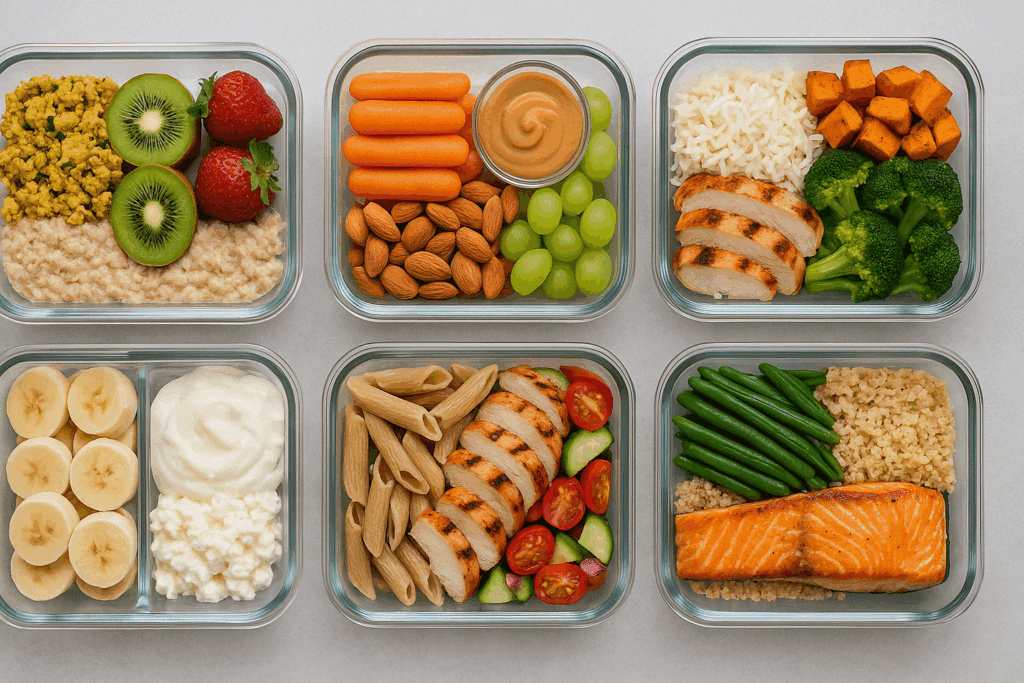
Conclusion: Nourishing Strength, Inside and Out
In the quest for vitality, resilience, and empowered fitness, strength training offers a transformative path—but it cannot stand alone. A scientifically grounded, thoughtfully structured nutrition plan for strength training is the key to unlocking the full potential of every rep, set, and sprint. For women, this means respecting biological nuance, embracing nutrient density, and recognizing that food is not the enemy of fitness but its most powerful ally.
Whether navigating the intricacies of a weight lifting diet for women, comparing the ketogenic diet vs low carb alternatives, or asking questions like is keto a good diet or is a keto diet sustainable, the answer lies not in rigid rules but in informed personalization. By approaching strength training through a lens of nourishment, intention, and evidence-based care, women can build bodies that are not just strong, but vibrantly well for years to come.
Was this article helpful? Don’t let it stop with you. Share it right now with someone who needs to see it—whether it’s a friend, a colleague, or your whole network. And if staying ahead on this topic matters to you, subscribe to this publication for the most up-to-date information. You’ll get the latest insights delivered straight to you—no searching, no missing out.
Further Reading:
Food as Fuel Before, During and After Workouts

